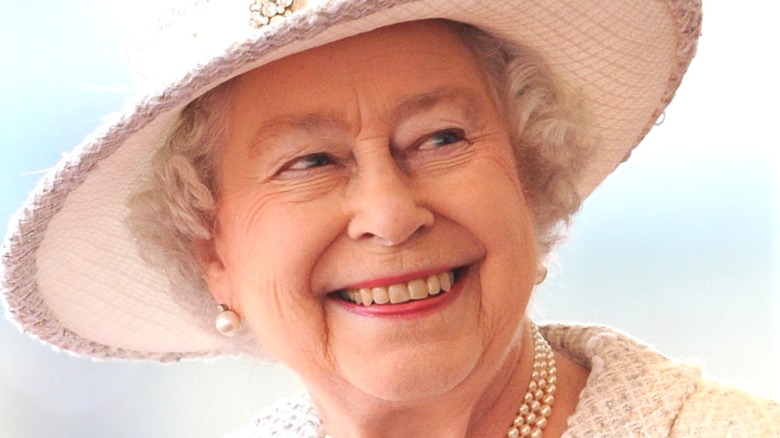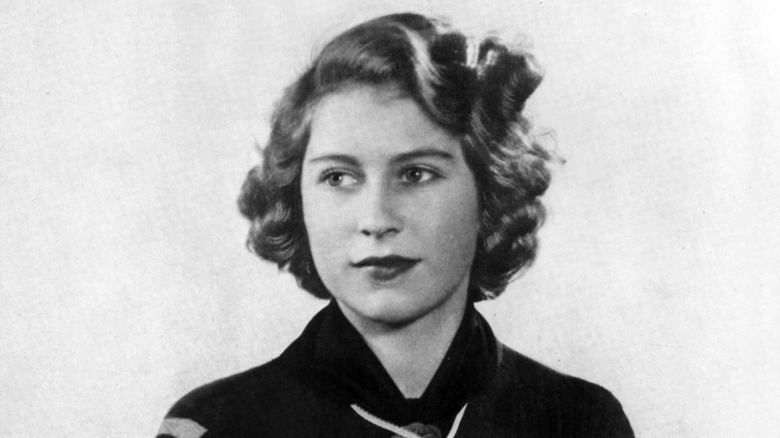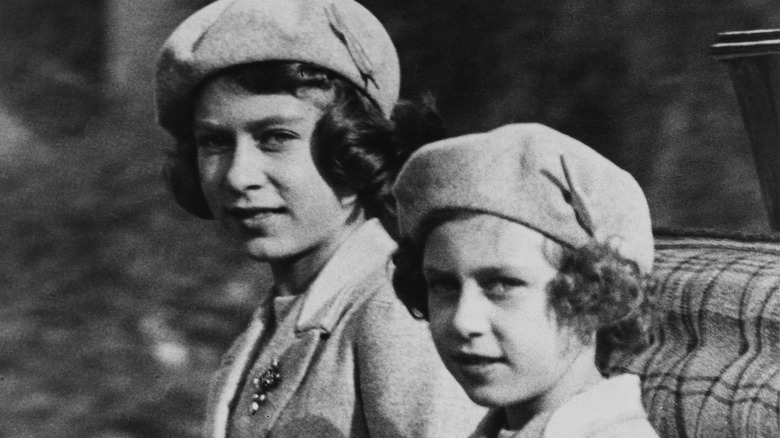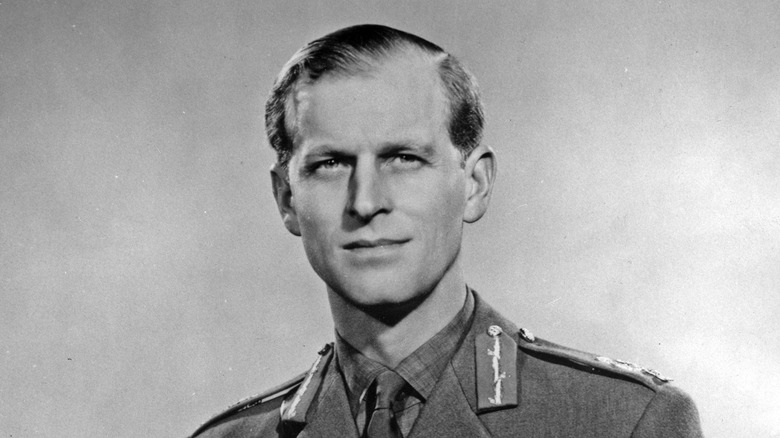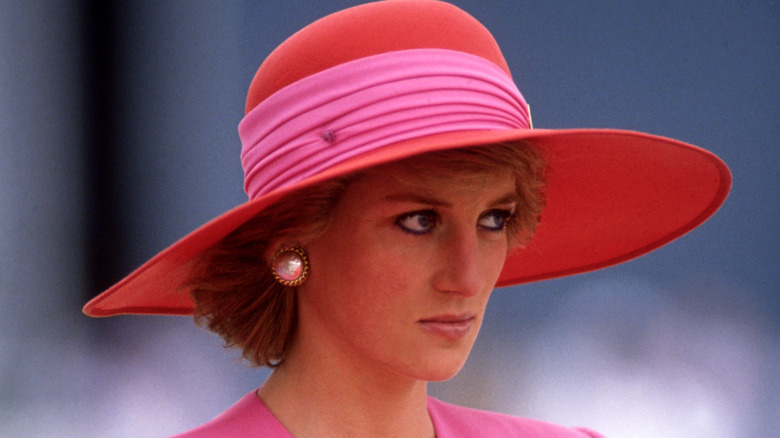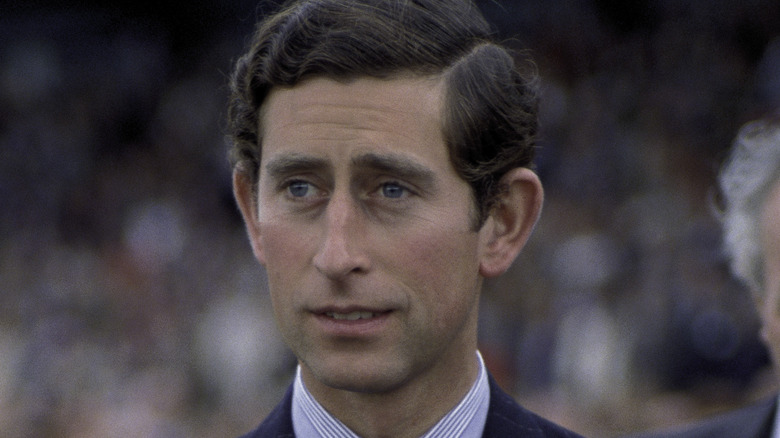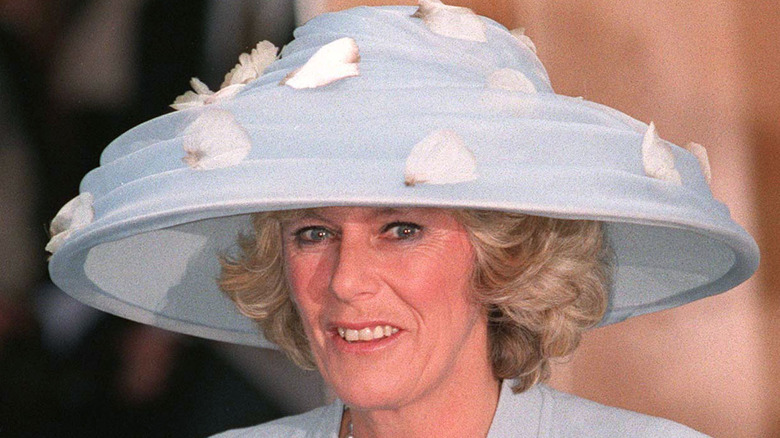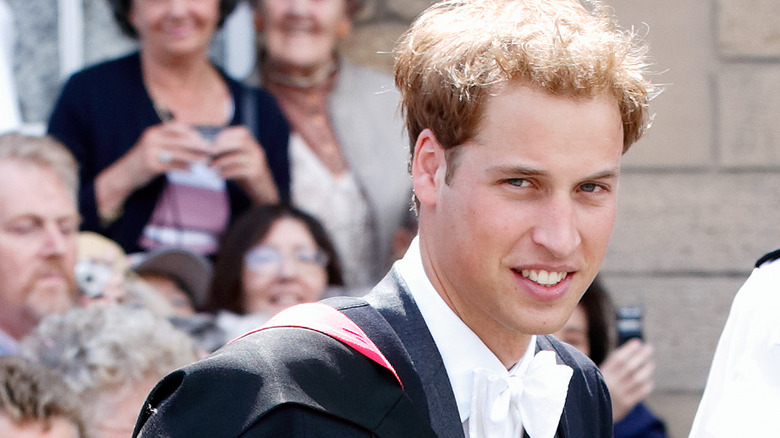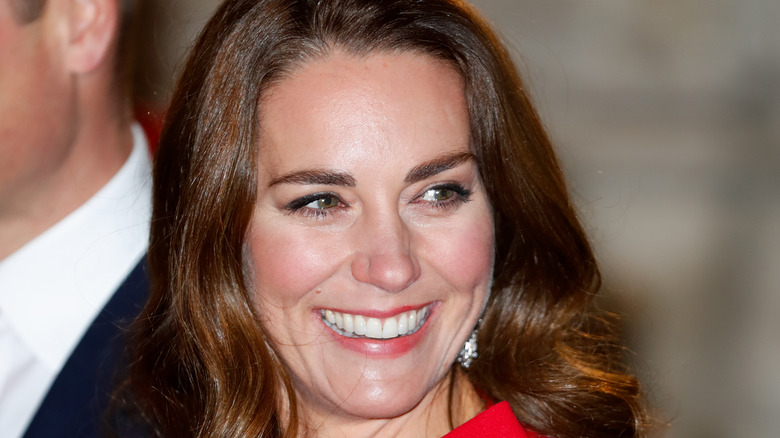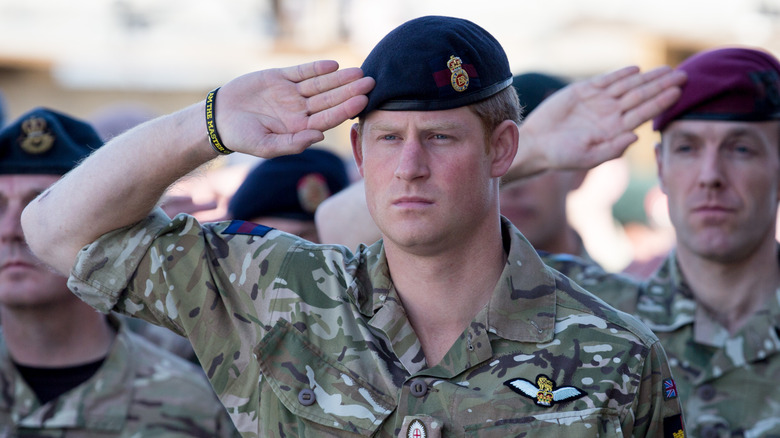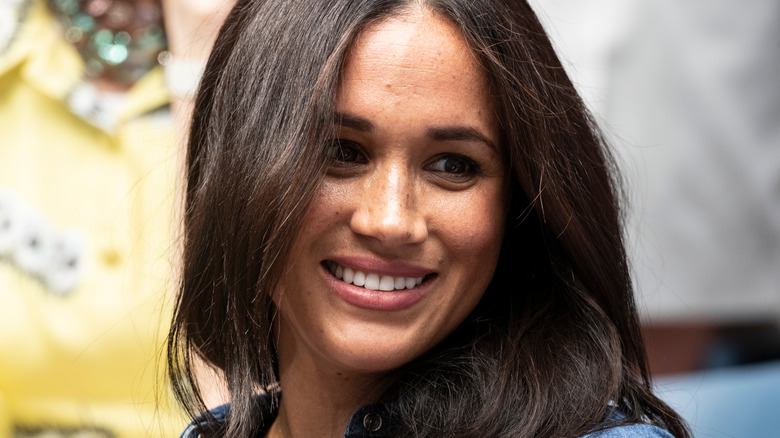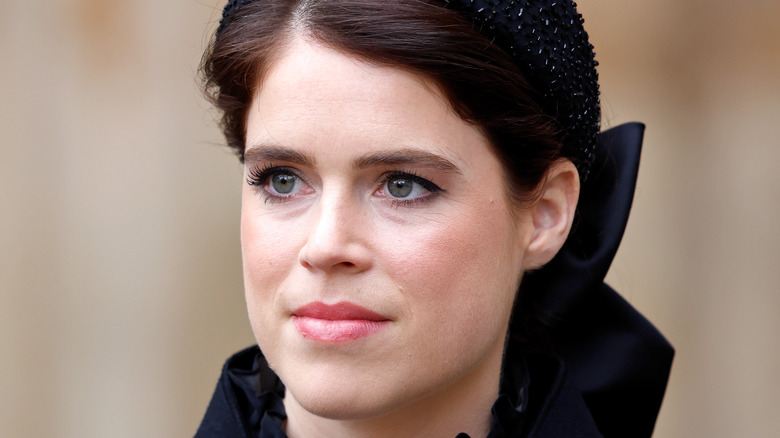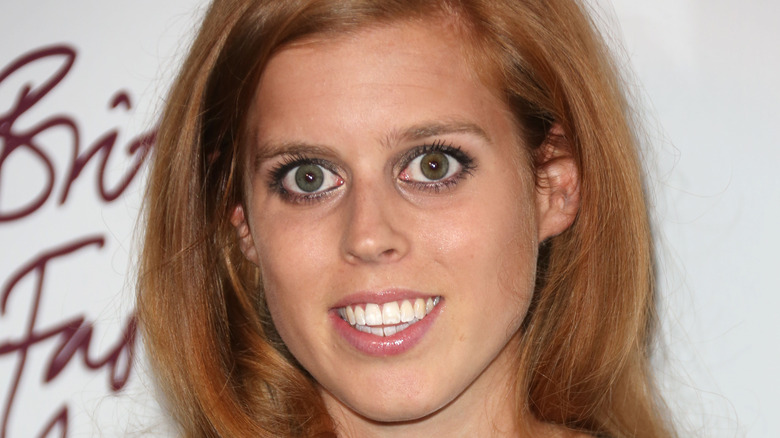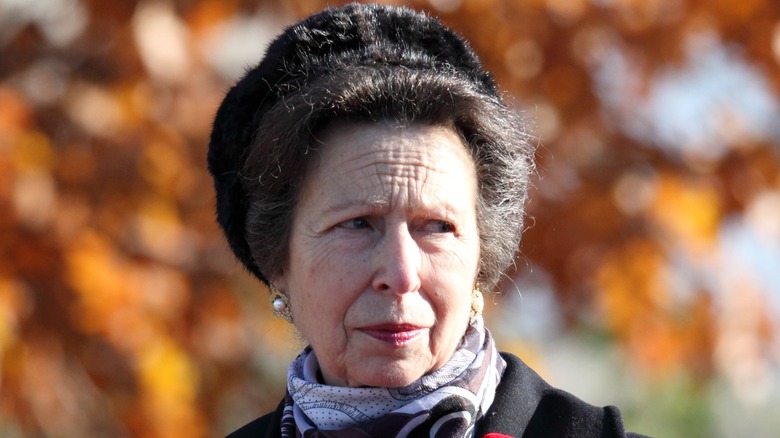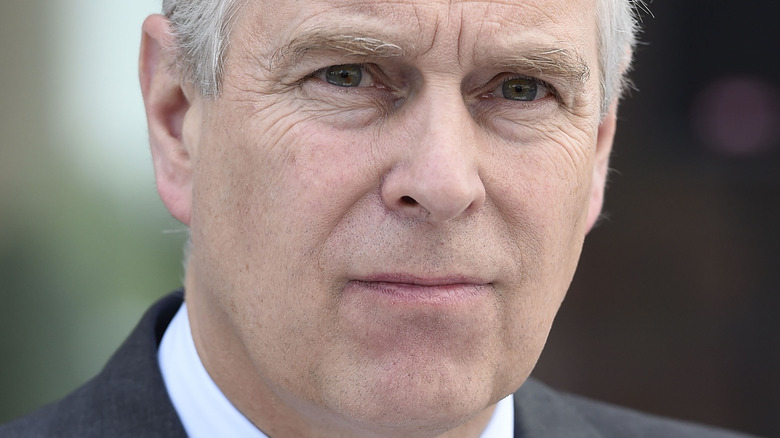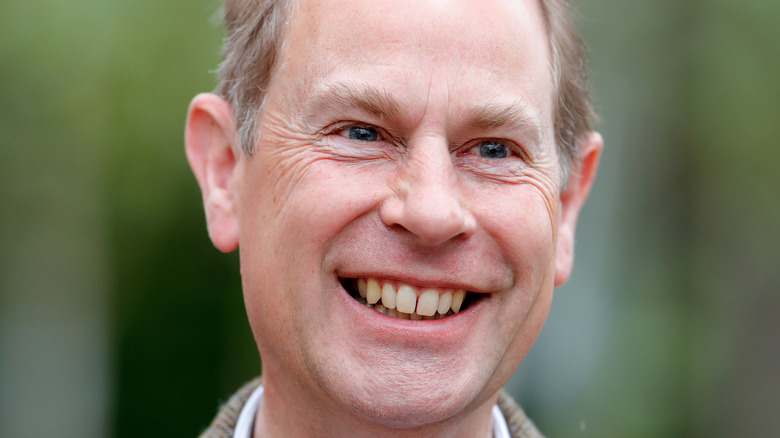How Far These Royal Family Members Really Got In School
The royal family seems to churn out more drama than expected for an institution whose motto is: "Never complain, never explain." Prince Harry and his wife, Meghan Markle, have certainly contributed to the media frenzy with their own campaign, consisting of a sit-down with Oprah Winfrey, a Netflix docuseries, Harry's memoir "Spare," and the ongoing press tour that preceded the book. The royal family allegedly took drastic action over Harry's memoir, as Harry ruffled feathers with his unseemly revelations. For a group of people who thrive on mystery, a memoir is not exactly a welcomed project. It got people talking about the messiest royal feuds, with the majority in a Nicki Swift survey picking the one between Princes William and Harry as the worst.
But even without Harry's doing, the family can't avoid media narratives. The passing of Queen Elizabeth II meant a whole new monarchy, with all eyes on King Charles III, who waited and waited and waited to become king. He certainly has big shoes to fill, as Elizabeth was not only the longest-reigning monarch in British history, but also the most beloved for many. While life as a working royal seems to consist of supporting charities and attending events, there's also the component of getting an education. Interestingly, the scope of schooling varies amongst royals, with some, like Queen Elizabeth, having a home education and others getting shipped off to boarding school. There's a long list of differences, including the choice not to pursue an education at all after high school.
Queen Elizabeth II was homeschooled
Queen Elizabeth II and her sister, Princess Margaret, were the last British royals to be educated only at home. While commoners would call this homeschooling, it certainly seems more glamorous to call it palace schooling! The Atlantic reported on Elizabeth's education in 1943, when she was only 17. The future queen's mother taught her the basics of reading, and the mum then passed the torch to their governess, Marion Crawford, when Elizabeth was around seven. BBC History magazine outlined the dainty daily schedule: "Elizabeth received lessons from 9:30 until 11 in the morning and the rest of the day was devoted to outdoor games, dancing and singing, with a rest period for an hour and a half." Crawford's pedagogy was complemented by tutors specializing in French and German fluency.
Then there was a marked shift in her education. When her uncle, Edward VIII, abdicated the throne in 1938 and Elizabeth's father became king, she was suddenly thrust into the path of the monarchy, meaning she had to change gears and receive an education fit for a future queen. As such, she was taught constitutional history by the vice-provost of Eton, Henry Marten, and the Archbishop of Canterbury taught her religion.
By all accounts, Elizabeth's education was rigorous and balanced; she studied English literature but was educated with the monarchy in mind. It's interesting to note, as The Atlantic points out, that Elizabeth's educational years were punctuated by the World Wars, which meant that she was not able to travel abroad, something that would've been expected of a well-rounded education for aristocratic children in more peaceful times.
Princess Margaret's lesser education
For her early years, Princess Margaret had a similar education to that of Queen Elizabeth II, being homeschooled by their mother and later taught by their governess, Marion Crawford. However, their parents, King George VI and the Queen Mother, weren't exactly known for pushing education. Professor Kate Williams told Good Housekeeping, "The queen's father had disliked school and her mother thought it was more important to have fun."
Since Elizabeth was destined to become queen while Margaret wasn't, there wasn't as great a need, the family thought, for Margaret to be as educated as Elizabeth was. Not only that, but allegedly, Margaret's education was limited so as not to outshine her sister. In the BBC documentary "Princess Margaret: The Rebel Royal," Lady Anne Glenconner (friend of the royal family) claimed, "[Princess Margaret] always said, 'I was never educated as well as my sister in order not to be a sort of threat to her,' that's what she felt" (via the Daily Mail).
Lady Glenconner noted the specific differences. Elizabeth was being taught by the vice-provost of Eton while Margaret's education came from a governess. Lady Jane Rayne, another childhood pal, said that this was a waste, because Margaret had great potential. "She was intelligent but it was never put to any sort of good use. I think that's all that was expected of her. Do good work, marry somebody, and have lots of little princesses," Rayne said in the documentary. So there was certainly a shift between the sisters.
Prince Philip's profound years at Gordonstoun
The Greek-born Prince Philip had a unique education of his own. His family had to flee from Greece when he was a baby and he was forced into a peripatetic childhood. As such, his education was all over the place. After studying in France, he attended Cheam Preparatory School in England in 1928.
When he was only 12, Philip attended Gordonstoun, which was run by the German teacher Kurt Hahn. Apparently the school was a perfect fit for Philip. Hahn later wrote a letter describing the royal's life there. "When Philip came to Gordonstoun his marked trait was his undefeatable spirit," Hahn wrote. "He enjoyed life, his laughter was heard everywhere and created merriness around him... In work he showed lively intelligence." Philip was naturally athletic and exhibited natural leadership, as well. Philip's character is what really shone while he was at Gordonstoun. His instructors viewed him as a student who could be trusted. His other sons, King Charles and Princes Andrew and Edward, also attended the school.
Philip attended the Royal Naval College, in Dartmouth, and he later served in the Royal Navy during World War II.
Princess Diana wasn't the best test-taker
Princess Diana chose less education, compared to many in the royal family. Her governess, Gertrude Allen, taught Diana when she was a child, and at six years old, the pupil went to Silfield Day School for two years, per BBC News. Diana then attended the prep school Riddlesworth Hall in Norfolk. Next, she boarded in Kent at the West Heath Girls' School. Diana also attended a finishing school in Switzerland called the Institut Alpin Videmanette, but her emotional reaction to the place was mixed. She enjoyed the athletic parts of life there, but not the academics. According to The Sun, Diana wrote in a letter to Mary Clarke, her nanny: "I hated going to the finishing school except for skiing."
England has a testing system for students to earn a General Certificate of Education (GCE) Ordinary Level, and students typically take their O-level exams around the age of 16. Diana failed these exams twice. This was seemed to be a challenge for Diana when she joined the royal family years later. Compared to then-Prince Charles, Diana reportedly felt inferior.
"I think one of the problems with Diana was that she never got a proper education," royal author Mary Kenny told Woman & Home. "She had a terrible inferiority complex about that, and said that she was as thick as two planks." However, Diana excelled in other areas; she was a terrific dancer, athletic, very social, and these traits were crucial in such a public role.
King Charles III became first heir apparent to get a university degree
King Charles III's education was remarkable for a royal. He was the first future king to be educated outside of his home and to earn a university degree. When he was six, he began attending an all-boys preparatory school, Hill House School, in London. Later, Charles' education mimicked that of his father, Prince Philip. Charles attended Cheam Preparatory School, and in 1962, he went to Gordonstoun in Scotland when he was 13.
While Philip was adamant that Charles attend Gordonstoun, his grandmother, the Queen Mother, allegedly disliked the idea of him living so far away. In letters written at the time, it's clear that Charles was unhappy there. "The people in my dormitory are foul. Goodness, they are horrid," Charles supposedly wrote, per The Sun. Later, he reportedly wrote: "I hardly get any sleep in the House because I snore and I get hit on the head all the time. It's absolute hell." He stayed there for five years. However, the king made a speech to the House of Lords in 1975 where he praised the school and said negative talk of the place surprised him (via People).
After this, Charles attended Trinity College Cambridge in 1967 and spent a semester at the University College of Wales, in Aberystwyth, where he learned about Welsh. In 1969, the BBC broadcast his investiture ceremony as the Prince of Wales. He completed his degree at Cambridge, majoring in archaeology and anthropology, with a focus on history. He graduated in 1970 and in 1975, the university awarded him a Master of Arts.
Camilla, Queen Consort reportedly loved school
Queen Consort Camilla reportedly valued her education from the beginning. "As a little girl she marched happily into school without looking back," Penny Junor wrote in her unauthorized biography, "The Duchess: The Untold Story." Camilla attended the village school of Dumbrells beginning at age five and reportedly loved the environment. She took English grammar, literature, French, and gym. The queen consort continued her education at Queen's Gate School, an all-girls school in South Kensington. Junor reported that Queen's Gate girls weren't exactly expected to pursue higher education or careers. When visiting the school in 2016, Camilla recalled her decision not to attend college: "...nobody seemed to give us much inspiration to go on. So we went off and explored the university of life, and Paris and Florence and London."
Camilla then went on to finishing school, first in Switzerland at Mon Fertile and later in France at the Institut Britannique in Paris. When she returned to London, she got a job at Colefax and Fowler, an interior design company. Imogen Taylor, a former partner at the firm, told The Sunday Times: "There were a lot of debutantes working for us, even Camilla. She worked for us for a moment but got the sack." In her memoir "On The Fringe: A Life in Decorating," Taylor said their irascible boss, Tom Parr, fired Camilla when she arrived late after a party night.
The queen consort clearly values literature and literacy — she launched a Reading Room in 2021, and she is the Patron of the National Literacy Trust in the U.K.
Prince William's public school education
Prince William had a unique start to his education, compared to other royals, thanks to his mother, Princess Diana. In an effort to keep her sons' lives as grounded as possible, Diana insisted that Princes William and Harry be educated at public schools. William first attended Mrs. Mynors' nursery in London — the AP reported that he was the first royal who went to preschool away from the palace. The school reportedly instructed its pupils in reading, writing, arithmetic, and the arts. Next came Wetherby Prep School. Afterwards, William attended the all-boys preparatory school Ludgrove in Wokingham, England. Following Ludgrove, William joined Eton College in 1995. He graduated in 2000 and took a gap year before commencing a degree at the University of St. Andrews in Scotland, per The Globe and Mail.
William did very well there, graduating with honors and earning higher grades than his father, King Charles III, and his uncle, Prince Edward. He enrolled as an art history student and later switched to geography, graduating in 2005 with a master's degree (however, in the United States, his degree would be considered a bachelor's degree). Of course, William's time at St. Andrews is also notable because it was where he met his wife, then known as Kate Middleton.
At his graduation ceremony, attended by Queen Elizabeth II herself, William said, "Today is a very special day for me, and I am delighted that I can share it with my family, and in particular with my grandmother, who has made such an effort to come, having been under the weather," according to the Los Angeles Times. So it was a joyful, family affair.
Catherine, Princess of Wales, could make history
Catherine, Princess of Wales, will be the most educated queen in England's history if she is crowned alongside Prince William. Her early education began at St. Andrew's in Berkshire. As a teen, Catherine attended Downe House, an all-girls school that offered both boarding or day classes. Catherine allegedly struggled with bullying at Downe, and another former student, Georgina Rylance, told The Sunday Times that part of the problem was that most of the students began at Downe at age 11. "You have two years of bonding, your first time away all together," Rylance said. "Even some of the most popular girls in my school had a hard time when they came in at 13." The second challenge was that Catherine decided to be a day student rather than a boarder, which meant she didn't get to bond with the other students in the same way.
Catherine transferred to Marlborough College for the equivalent of high school and was a student there from 1996-2000, per the Gazette & Herald. Something not everyone may know about her years there: Kate was a good hockey player!
Then at 19, she took a gap year — something very traditionally British — by taking a trip to Chile. Catherine was reportedly slated to attend Edinburgh University, but changed her mind and attended the University of St. Andrews, where she studied art history. Years later, speaking at the University College London, Catherine admitted, "I started off doing Psychology at St Andrews, with History of Art. It was a bit full on, but it was really interesting," she said (via Hello!).
Prince Harry's military route
Prince Harry chose a different route than a classical university education. Out of all of Queen Elizabeth II's grandchildren, he's the least educated, but he certainly amassed other, equally worthwhile experiences. The little prince followed in his brother's footsteps by attending Mrs. Mynors' Nursery School. Thanks to Princess Diana's influence, Harry attended Wetherby Preparatory School in Notting Hill in 1989. He then went to Ludgrove School, very near Windsor Castle. Once Harry turned 13, he began attending Eton College, which again showed Diana's influence on her sons' educations. King Charles III's side of the family had largely attended Gordonstoun School in Scotland, but Diana's side, the Spencer side, reportedly chose Eton.
Years later, reflecting on his education with wife Meghan Markle and Malala Yousafzi, Harry recalled, "I'm hugely grateful for the education that I was lucky enough to have. At the time I certainly probably wasn't as grateful, but looking back on it now, I'm very, very blessed with having such an amazing opportunity."
Harry didn't fare well academically and a former teacher, Sarah Forsyth, told The Guardian that she had been asked to contribute to some of Harry's exam work. "I was concerned that this was unethical and probably constituted cheating," she claimed. "I assumed I had been asked to do this because Prince Harry was a weak student." Following Eton, Harry joined the Royal Military Academy Sandhurst, stayed in the army for ten years, and became a Captain while serving.
Meghan Markle's American education
Meghan Markle, the Duchess of Sussex, is another well-educated member of the royal family. She attended Immaculate Heart High School in Los Angeles. Following this, she attended Northwestern University in Illinois, double-majoring in theater and international relations and graduating in 2003. While in college, Meghan was a Kappa Kappa Gamma sorority member and also took advantage of study-abroad programs offered by the school. She went to Spain for a study period and went to Buenos Aires to complete an internship at the American Embassy there.
While she and husband Prince Harry have created some waves after leaving the royal family as senior working members and coming out with their Netflix docuseries, those who knew her at Northwestern had positive things to say about her. Sorority sister Liz Kores Graham told the Chicago Tribune, "Meg was sort of always this ethereal, sophisticated, beautiful creature who lived with us and was always willing to lend you a top." Other sorority sisters had similar reports. "Myself and most of my sisters agreed that she just is a really lovely person. She is respectful and polite. She always had this manner to her of being dignified and poised," one said.
Meghan's education is that much more impressive when compared to the rest of the royal family, and in a study conducted by Oxford Royale (via the New York Post), she was dubbed "most intelligent member of the British royal family" based on her education.
Princess Eugenie attended the same school as Kate
Princess Eugenie, daughter of Prince Andrew and Sarah Ferguson, did so well in school that Buckingham Palace issued a statement in 2008 when she completed her GCSEs, the standardized tests in England prior to enrolling in university. Her parents said, "[We are] delighted by Eugenie's achievements," according to Tatler. "She has worked extremely hard towards these justifiably fantastic results." Eugenie and her sister both went to Upton House in Windsor before Coworth School and then St. George's School, Ascot. The young princess even attended a Montessori school as a toddler.
She actually has an educational link to Catherine, Princess of Wales, as they both attended the private school Marlborough College. Following this, Eugenie enrolled in Newcastle University, where she loved living with her roommates. The princess graduated in 2012 with a double major in English and art history. She ended up using her education in art history to land a job at Paddle8, an auction house in New York, and she later worked in London at the art gallery Hauser & Wirth, per Artnet.
Since Eugenie is not a senior working royal, like Prince William and Catherine, she was able to find work outside of royal duties. She told Harper's Bazaar, "I've loved art since I was very little. I knew I definitely wouldn't be a painter, but I knew this was the industry for me. I love being able to share my passion for art with people." So this arrangement obviously suited her just fine.
Princess Beatrice's normal working life
Princess Beatrice, daughter of Prince Andrew and Sarah Ferguson, attended St George's School in Ascot. Following this, she attended Goldsmiths College, University of London, studying history and the history of ideas. She graduated in 2011.
Like her sister, Princess Eugenie, Beatrice worked at "normal" jobs compared to relatives in the family who work as senior royals. She began at Sony Pictures Entertainment as an intern and left a coordinating producer job following the Sony hack of 2014. People reported that Beatrice lived in New York while she was enrolled in a finance course. She later worked at an investment firm and joined the tech label Afiniti as the Vice President of Partnerships and Strategy.
But Beatrice's education is all the more remarkable knowing that she was diagnosed with dyslexia as a child, which made reading very difficult. "I remember one of my earliest memories was sitting in front of a Beatrix Potter book and the illustrations were so beautiful, but the words meant nothing," the princess recalled in a podcast interview for the Helen Arkell Dyslexia Charity, an organization close to her heart and her own experience (via Express). Beatrice notes that the charity was hugely influential to her, and she's worked as an outspoken supporter for HADC as well as the Made By Dyslexia organization. In a video for the latter charity, Beatrice shared that her school experience presented unique challenges, particularly in terms of reading levels. "I feel like I really understand that we have a responsibility to change the narrative around what we are delivering to young people in the classroom," she said (via Express).
Anne, Princess Royal, makes education part of her platform
Little is known of Princess Anne's early education, but she presumably was instructed at home before age 13, when she attended the boarding school Benenden in Kent, enrolling in 1963. Anne was not in the least bit homesick. In fact, she later told Vanity Fair that this was a great educational move for her. "I was ready to go to school. I had a governess and two friends and that was never going to be enough, really, so I was only too pleased to be sent off somewhere else."
After graduating, Anne chose not to attend university, but got right to work as a senior royal. In the documentary "Anne: The Princess Royal at 70," she explained that her peers pursued higher education simply because it was the custom. "And I remember thinking really, that doesn't sound like a very good reason to go university, so I thought I would skip that," she said (via Women & Home).
As one of the most famously hard-working royals, Anne has spoken about her patronages, including education for children. "One of the other charities I got involved with was the Royal Wanstead Foundation, which is now the Royal National Children's SpringBoard Foundation and takes children from chaotic homes and sends them to boarding schools. You only have to listen to them to realize that it's absolutely transformed their lives," she told Vanity Fair. So she took her own positive experience and made it possible for others to have the same. The equestrian is also involved in several charities related to horses and riding.
Prince Andrew's scientific knowledge was lackluster
Prince Andrew, son to Queen Elizabeth II and Prince Philip, began his education at age four under governess Catherine Peebles. She taught the young prince and his coed group of schoolmates at Buckingham Palace. Beginning at eight years old, Andrew was then educated at Heatherdown Preparatory School in Ascot and later attended Gordonstoun in Scotland, like his father and brother, King Charles III. He did a short exchange program in Canada and then went to Britannia Royal Naval College, Dartmouth, followed by pilot training.
As a royal, Andrew got involved in patronages, but when he was slated in 2013 to become a fellow of the Royal Society, a group largely known for its scientific rigor, many balked at the idea, claiming that Andrew didn't have the scientific backing or knowledge to be a real member. The Sunday Times reported that Andrew was elected by only 11% of the members, many of whom never bothered to submit their votes. On top of that, the votes seemed performative at best. The only option was "yes." Former president Lord May said, "This is not the way to run an election. A ballot where you can only say yes is a bad idea and should be changed."
On top of that, the naval officer's troubling past, including his friendship with Jeffrey Epstein, made him an even less desirable member.
Prince Edward's theatrical career
Prince Edward, the youngest son of Queen Elizabeth II and Prince Andrew, spent his early years studying at the palace before going to Gibbs Preparatory School for a year. He then attended Heatherdown Preparatory School beginning at age eight, and later followed the family tradition by attending Gordonstoun in Scotland. He also briefly traveled on a gap year, working as a junior master and teaching athletics at Wanganui Collegiate School in New Zealand. After this, Edward attended Jesus College at Cambridge University and graduated with a degree in history in 1986.
Per AP News, his studies were part of a cadetship sponsored by the Royal Marines. The prince reportedly served four months out of a nine-year enlistment. Instead, he followed his bliss by carving out a career in theater production. He worked for a time at Andrew Lloyd Webber's Really Useful Theatre Company and later worked in television production through his own company, Ardent Production. In this venture, Edward created a documentary on his great-uncle, the Duke of Windsor. However, the production company ended up folding, per The Guardian.
When Prince Philip's health began declining in 2017, Edward stepped up and became a working royal, and in 2015, he was made the Chairman of the Trustees of The Duke of Edinburgh's International Award Foundation.

